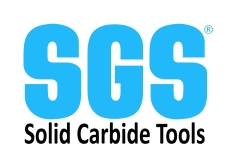KYOCERA SGS Precision Tools, Inc., formerly known as the SGS Tool Company and a wholly-owned subsidiary of KYOCERA Corporation, was originally founded in 1951 and is an ISO-certified leader of round solid carbide cutting tool technology for the aerospace, metalworking, and automotive industries. Today, it is best known for its solid carbide high performance end mills and drills. However, it is also well known for its stainless steel medical tools and technically advanced, proprietary PVD coatings. KYOCERA SGS Precision Tools, with manufacturing sites in the United States and United Kingdom, aggressively services its customers through a global network of Sales Representatives, Industrial Distributors, and Agents that sell into more than 60 countries.
In the realm of manufacturing, is subtractive machining with computer-aided design (CNC) a declining industry? This question stems from the lower industry growth rates that range from 0% to 2%. These growth rates are lower than the national average of 3% across all industries [1].
However, upon further examination of the industry, it becomes evident that CNC machining is not becoming obsolete. Instead, it is adapting and evolving to keep pace with the ever-advancing technology.
Growth Trends and National Averages
The initial growth rates in the CNC machining industry may at first appear dismal. However, when we consider more factors, a more detailed and complex story emerges. Machinists in the United States are expected to show minimal change in employment from 2022 to 2032. 38,200 job openings are expected each year for machinists and tool and die makers within the United States. This highlights the significance of the occupation and the continuing relevance of this profession [1].
The unemployment rate shows how well the industry is doing and its ability to recover when issues arise that affect the demand for the product/service. To prove this point, consider the following. Despite a transient surge in unemployment in April 2020, a rapid rebound ensued. In April 2020, the unemployment rate was 13.2%, but it went down to 4.3% by December of that year. By January 2023, it had further plummeted to an impressive 2.6% [2].
The employment trend shows that CNC manufacturing is important and needed in the overall manufacturing industry. Based on data accumulated over the past decade, we expect this positive trajectory to continue in the coming years. The manufacturing industry has mostly seen progressively lower unemployment rates over time, although there have been fluctuations and a few exceptions like April 2020. Unemployment in manufacturing is decreasing, proving the relevance of subtractive manufacturing with computer-aided design.









Talk to Us!
Leave a reply
Your email address will not be published. Required fields are marked *